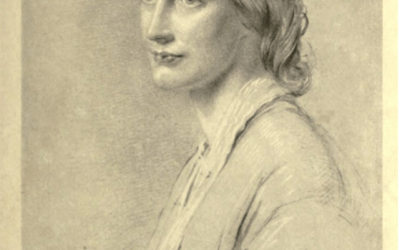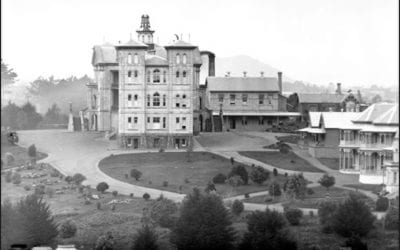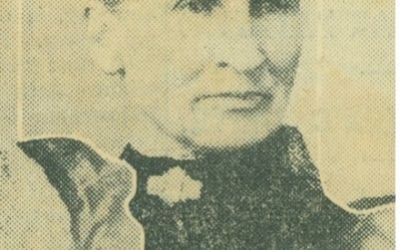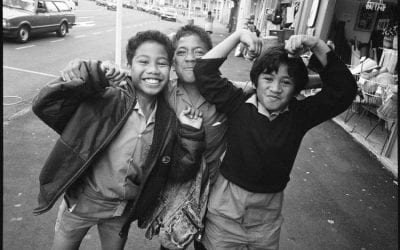AHI Summer Research Scholarships
Research Articles
Te Whakapapa o Ngāti Te Ata Waiōhua The Whakapapa of Ngāti Te Ata
Part Two Te Whakapapa o Ngāti Te Ata Waiōhua The Whakapapa of Ngāti Te AtaPart One Understanding historic Māori fluidity within Ngāti Te Ata Waiōhua: An outlinePart Three The fluidity of Ngāti Te Ata rohePart Four Diversity of thought and action within historic Ngāti...
Understanding historic Māori fluidity within Ngāti Te Ata Waiōhua: An outline
by Tommy de Silva*
What does the term ‘Tāmaki Makaurau’ mean? Some would argue that it means ‘Tāmaki of a hundred lovers’, while others would claim it means ‘Tāmaki desired by many’ or ‘Tāmaki the bride sought by a hundred’. No matter which meaning you prefer, they all clearly suggest that Tāmaki has long been a place sought after by many rōpū (groups).
Conserving Auckland’s Nineteenth Century Built Jewish Heritage
Part Four Conserving Auckland’s Nineteenth Century Built Jewish HeritagePart One Setting-up Auckland’s Jewish CommunityPart Two 19th Century Jewish Community of Central AucklandPart Three Sanctuary at the Ends of the Earthby Sarah Oliver* In previous essays, I have...
Sanctuary at the Ends of the Earth
Part Three Sanctuary at the Ends of the EarthPart One Setting-up Auckland’s Jewish CommunityPart Two 19th Century Jewish Community of Central AucklandPart Four Conserving Auckland’s Nineteenth Century Built Jewish Heritageby Sarah Oliver* “The colony of New Zealand...
Setting-up Auckland’s Jewish Community
by Sarah Oliver*
“David Nathan had decided that if the powers-to-be determined that the new capital was to be on the shores of the Waitemata Harbour then he would follow.” David Nathan was one of the first Jews to move to the shores of the Waitematā Harbour, where in 1841, Captain William Hobson announced the new capital of New Zealand was to be built.
The ‘right’ way to be a feminist: conversations on the Contagious Diseases Act 1869 and the feminist consciousness of late nineteenth-century Auckland.
Part Three The ‘right’ way to be a feminist: conversations on the Contagious Diseases Act 1869 and the feminist consciousness of late nineteenth-century Auckland.Part One The Post-1893 Political Environment for Auckland WomenPart Two The Contagious Diseases Act 1869:...
The Contagious Diseases Act 1869: Immoral, Unequal, or Necessary?
Part Two The Contagious Diseases Act 1869: Immoral, Unequal, or Necessary? Part One The Post-1893 Political Environment for Auckland WomenPart Three The ‘right’ way to be a feminist: conversations on the Contagious Diseases Act 1869 and the feminist consciousness of...
The Post-1893 Political Environment for Auckland Women
by Saana Judd*
In 1893, women in New Zealand won the right to vote in parliamentary elections. During this time, the social, political, and economic environment for women was undergoing a period of great change. The end of the nineteenth-century saw women begin to attend university in greater numbers and enter the workforce more fully.
The Removal of the Pacific Community from Greater Ponsonby
by Flynn McGregor-Sumpter*
From the late 1970s and into the 1980s the identity of Greater Ponsonby began to shift yet again. Unlike the changes that occurred in the 1950s and 1960s, in which Pacific people moved into and started to dominate this region, this period saw the removal of the Pacific community from Auckland’s central suburbs.
The Role of the Church in Pacific Immigrants’ Lives
by Flynn McGregor-Sumpter*
Religious faith and the Church play a significant part in the lives of many Pacific Island people. From the beginning of Polynesian immigration to New Zealand, the Church played a prominent role for the Pacific communities in this country. For Pacific people, “the Church was the place to which one went on all ordinary occasions, and it was a normal and essential part of life”.
Pacific Immigrants in the ‘Greater Ponsonby’ region
by Flynn McGregor-Sumpter*
The three decades following the conclusion of the Second World War saw a significant rise in migration to Aotearoa New Zealand. Pacific Islanders in particular were attracted to New Zealand through a scheme that aimed to address the labour shortages in process work and manufacturing.
ESCAPING PARADISE: Prison Labour and Rangitoto Island
Part One CONQUERING THE MAUNGA: Early Encounters with Rangitoto IslandPart Two LAND OF SCORIA AND HONEY: Pioneering Economies on Rangitoto IslandPart Three TAMING PARADISE: Exploring Rangitoto's Early Bach Community Part Four ESCAPING PARADISE: Prison Labour and...











